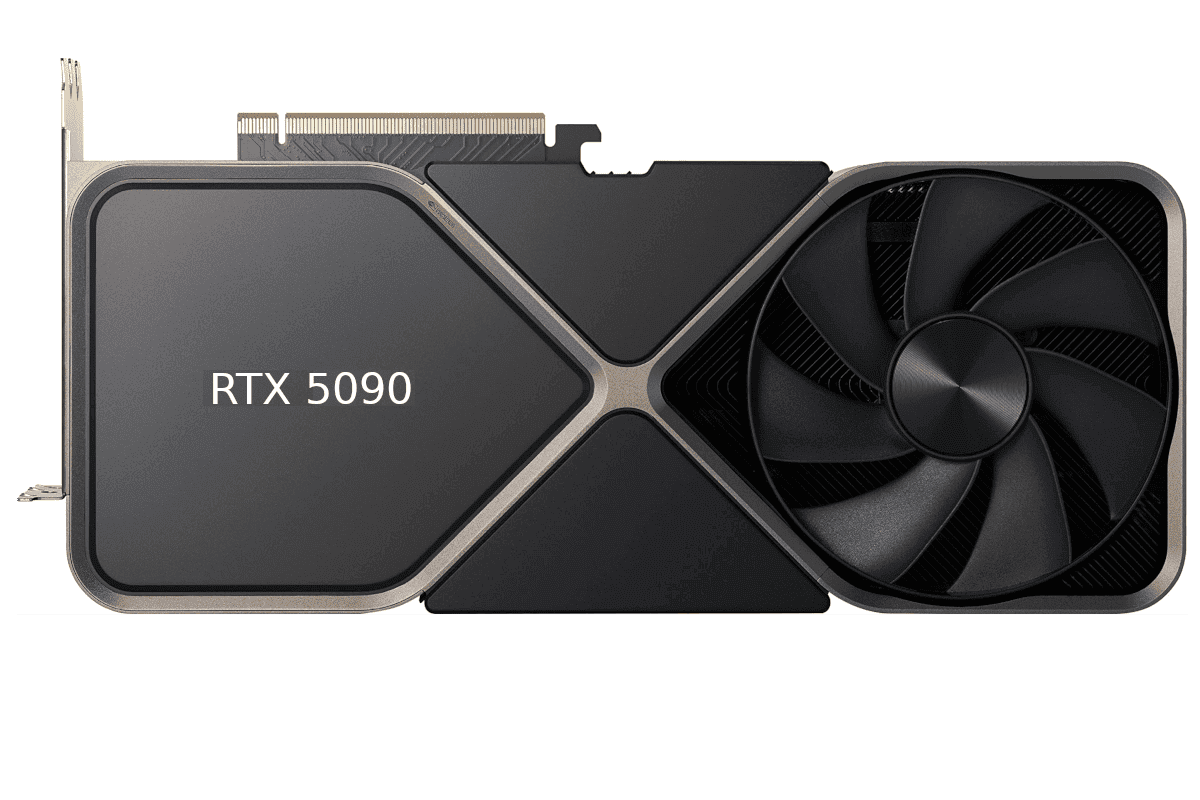If you’ve been waiting to upgrade your GPU to the RTX 50 series, your wait may soon be over. It’s widely believed that NVIDIA will unveil the next generation of graphics cards — the RTX 50 series — at CES 2025 on January 7, 2025. Rumors suggest that both the 5090 and 5080 will be launched at CES 2025, with NVIDIA CEO Jensen Huang likely making the announcement. There’s also strong speculation that the 5070 will be showcased at the electronics show as well (or come shortly after). The rest of the series, including the 5060 and 5050, would be introduced later as they become available. If everything goes as expected, we should see the 50 series RTX graphics cards available for purchase by the end of January to February 2025.
The 5000 series cards are expected to push the boundaries of gaming performance further than ever before. Demand is expected to be pretty significant, as many people have been waiting on the sidelines due to previous delays. A lot of gamers have skipped the 4000 series entirely and for them, it will be hard to skip over the 5000 series as well given the age of their hardware.
The good news is, however, that crypto miners are largely out of the picture this time around so there is hope that NVIDIA can finally get past the price gouging issues from scalpers who buy up all the stock at launch. While some of that will still happen, we’re hopeful that NVIDIA can squash it quickly by releasing enough stock to satisfy the demand.

The new series of GPUs will utilize NVIDIA’s Blackwell architecture, which will bring considerable improvements over the current RTX 40 series. These cards will be VERY power hungry so most new users will have to upgrade their PSUs as well, with the top-end 5090 expected to require up to 600 watts of power (and feature 32GB of cutting-edge GDDR7 memory). Its smaller counterpart, the 5080, is rumored to have 16GB of VRAM and draw 400 watts. While exact performance figures remain unknown, leaks suggest impressive specifications. The 5090 could boast 21,760 CUDA cores, while the 5080 may have 10,752. These numbers indicate a substantial leap in graphics processing power for PC gaming and other demanding tasks.
Nvidia RTX 50 Series GPUs Set to Launch at CES 2025
NVIDIA is preparing to unveil its next generation of graphics cards, the RTX 50 series, at CES 2025 in Las Vegas. This exciting announcement has been confirmed by multiple reliable sources, sparking anticipation within the gaming community. Expect a significant leap in performance, with leaked benchmarks indicating up to a 2.5x improvement over the current generation.Get ready to witness a new era of PC gaming as NVIDIA sets a new standard with the RTX 50 series.
Blackwell Architecture: A New Era of Performance
The RTX 50 series is rumored to be based on NVIDIA’s brand-new Blackwell architecture. This represents a significant leap forward from the current Ada Lovelace architecture, promising substantial performance gains and new features. Early leaks suggest improvements of up to 2.5 times the performance of the 4000 series, which could translate to incredible frame rates and stunning visuals in the latest games.
Expected Lineup and Specs
While NVIDIA is keeping the official details under wraps, here’s what the rumor mill suggests about the RTX 50 series lineup:
| Model | Expected Memory | Key Features |
|---|---|---|
| RTX 5090 | 32GB GDDR7 | Flagship card with massive memory bandwidth, potentially exceeding 1.7 TB/s. |
| RTX 5080 | 20GB GDDR7 | High-end card with significant performance gains over the RTX 4080. |
| RTX 5070 | 12GB GDDR7 | Mid-range powerhouse offering excellent performance at a more accessible price point. |
| RTX 5060 | 8GB GDDR7 | Entry-level card offering a significant upgrade over the RTX 4060. |
DLSS 3.5 and More
The RTX 50 series is expected to bring more than just raw power. Rumors suggest that NVIDIA will also introduce DLSS 3.5, an updated version of its Deep Learning Super Sampling technology. This could lead to even better image quality and performance boosts in supported games. Additionally, expect enhancements to ray tracing capabilities for more realistic lighting and reflections.

Release Date and Pricing
With a CES 2025 unveiling, it’s likely that the first RTX 50 series cards, such as the RTX 5090 and RTX 5080, will be available shortly after, possibly in late January or February. The RTX 5070 and other models are expected to follow in the subsequent months. Pricing is still uncertain, but expect these high-performance cards to come with a premium price tag.
| Model | Expected Release Date |
|---|---|
| RTX 5090 | Late January / Early February 2025 |
| RTX 5080 | Late January / Early February 2025 |
| RTX 5070 | February / March 2025 |
| RTX 5060 | Spring 2025 |
| RTX 5050 | Late Spring / Early Summer 2025 |
Important Note: These dates are based on current rumors and speculation. NVIDIA has not officially confirmed any release dates for the RTX 50 series. It’s recommended to stay tuned for official announcements from NVIDIA for the most accurate information.
Stay Tuned for Official Announcements
While these rumors paint an exciting picture of NVIDIA’s next-gen GPUs, it’s important to remember that nothing is official until NVIDIA makes an announcement. CES 2025 is just around the corner, so stay tuned for the latest updates and prepare for a new era of PC gaming with the RTX 50 series.
Key Takeaways
- The RTX 50 series is expected to launch in early 2025, starting with the 5090 and 5080 models
- New GPUs will use NVIDIA’s Blackwell architecture, promising big performance gains
- High-end cards may require more power and feature increased VRAM compared to current models
Overview of the RTX 50 Series
Nvidia’s RTX 50 Series marks a big step in GPU tech. These new graphics cards aim to boost gaming and work tasks.
Evolution from RTX 30 and RTX 40 Series
The RTX 50 Series builds on the progress of past cards. It uses a new design called Blackwell. This change should make the cards faster and more power-smart.
Compared to RTX 30 and 40, the 50 Series is set to offer better frame rates in games. It may also handle AI tasks more quickly. The cards might use less power while doing more work.
Rumor has it that the first RTX 50 cards could launch in early 2025. This gives time for current GPUs to sell and for new tech to be ready.
Nvidia’s Role and Market Expectations
Nvidia leads in high-end GPUs. With the 50 Series, they aim to keep this spot. Gamers and pros alike look forward to these new cards.
The market hopes for big gains in speed and features. Ray tracing and DLSS might see big upgrades. This could make games look even more real.
Nvidia may face tough competition. Other companies are working hard on their own new GPUs. This push could lead to better prices for buyers.
The RTX 50 Series launch is a big deal for PC upgrades. Many users wait for new GPU series to improve their systems.
Technical Specifications and Performance
The RTX 50 series is set to bring major improvements in GPU architecture, memory tech, and AI capabilities. These changes aim to boost performance for gamers and professionals alike.
GPU Architecture and Manufacturing Process
The RTX 50 series will use NVIDIA’s new Blackwell architecture. This design builds on the strengths of the Ada Lovelace architecture used in RTX 40 cards. Blackwell is expected to use a more advanced process node, likely 3nm or 4nm. This smaller size allows for more transistors and better power efficiency.
Rumors suggest a big jump in CUDA core count. The top-end RTX 5090 may have over 20,000 cores. This could lead to a 30-40% performance uplift over the RTX 4090.
Some models might use a multi-chip module (MCM) design. This approach links multiple smaller chips instead of one large chip. It could improve yields and allow for more powerful GPUs.
Memory Technology and Bandwidth Improvements
The RTX 50 series is likely to use GDDR7 memory. This new type of VRAM offers faster speeds and better power efficiency than GDDR6X.
Expected memory bandwidth could reach 1.5 TB/s or higher. This is a big jump from the RTX 4090’s 1 TB/s. Higher bandwidth helps with 4K and 8K gaming, as well as AI tasks.
Memory bus width might stay at 384-bit for top models. But the combo of GDDR7 and architecture tweaks should still boost overall memory performance.
AI and Ray Tracing Capabilities
AI performance is set to make a big leap with the RTX 50 series. Improved Tensor cores will speed up tasks like DLSS, AI art creation, and video upscaling.
Ray tracing should also see gains. New RT cores may allow for more complex lighting and shadows in games. This could make ray-traced graphics more common in demanding titles.
NVIDIA might introduce new AI features specific to the RTX 50 series. These could include better noise reduction in games or improved AI-assisted video editing tools.
Availability and Market Dynamics
Nvidia’s RTX 50 series is set to shake up the GPU market. New cards will arrive in stages, with pricing and specs that could change the competitive landscape.
Release Timeline and Pricing Strategy
The RTX 50 series launch is planned for early 2025. Nvidia will likely start with high-end models like the RTX 5090 and 5080 at CES in January. Mid-range cards such as the RTX 5070 Ti and 5070 may follow in February.
Pricing remains unknown, but Nvidia might keep costs similar to the RTX 40 series. This could mean:
- RTX 5090: $1,599
- RTX 5080: $799
- RTX 5070: $599
The company may adjust prices based on AMD’s moves and market conditions. A gradual rollout could help Nvidia manage supply and keep prices stable.
Competitive Landscape and Consumer Expectations
AMD plans to challenge Nvidia with its own next-gen GPUs. This rivalry could lead to better prices or features for buyers. Intel is also in the mix, though its impact may be smaller.
Gamers and pros want big gains over the RTX 40 series. Key hopes include:
- Better ray tracing
- Faster frame rates at 4K
- More VRAM on mid-range cards
The holiday season of 2024 might see price drops on RTX 40 cards as stores clear stock. This could be a good time for budget-minded buyers to upgrade before the new series arrives.







